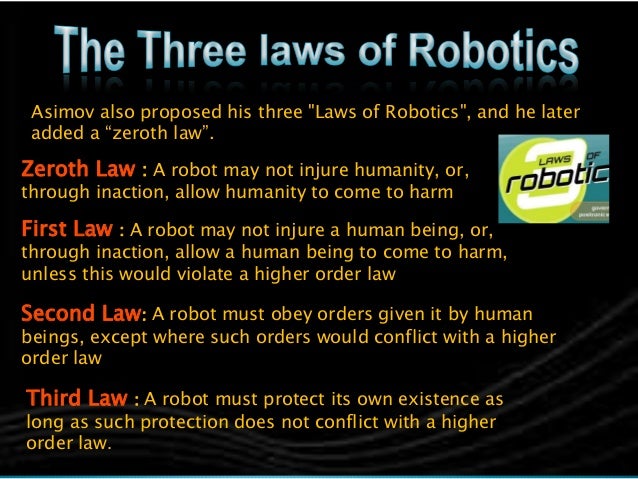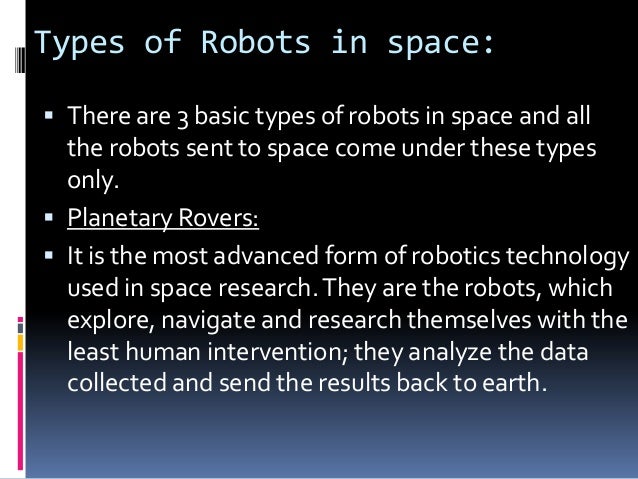Download Ppt On Space Robotics

Space Robotics is the development oI machines Ior the space environment that perIorm Exploration, or to Assemble/Construct. Aintain, or Service other hardware in Space.
Umans generally control space robots locally (e.g. Space Shuttle robotic arm) or Irom a great distance (e.g. Ars Exploration Rovers.ADVANTAGES:!erIorm tasks less expensively, sooner, and/or with less risk or more delicate 'touch' than with human astronauts. Go where people can`t go (within reason), and Ior long durations. Space is a hazardous environment. Access to space is expensive. Robots don't need to return to Earth (which can be very costly).1.
Free business card templates. Download Free Space Robotics PowerPoint templates (ppt) and backgrounds for your presentations. Template library PoweredTemplate.com.
Ln-c(LiI pc:iIicninc cnc c::emL y2.
Space Robotics Scope: The Space Robotics Technical Committee has two main areas of interest: Microgravity and Planetary Robotics. Microgravity Robotics includes manipulation and mobility for scenarios such as International Space Station (ISS) operations and satellite servicing. Planetary Robot systems address scenarios such as Mars and lunar exploration using manipulation or mobility on or near the surface.
Some scenarios, such as asteroid and comet exploration, have environments with low gravity which may blur the distinctions between these categories. The Dextre robot on the International Space Station For Microgravity Robotics the space environment (radiation, contamination sensitivity, thermal extremes, etc.) poses unique challenges to robot and robot algorithms. Despite this, it is expected that the robotics discipline will find increasing importance in coming years, particularly as the opportunities for human-robot and robot-robot cooperation arise in space exploration. Priority areas for this technical committee include: • Electromechanical design and control. • Microgravity locomotion. • Machine vision for inspection and assembly, including compensation for stark lighting, glare, glint, and deep shadows.
• Command and control interfaces, including teleoperated modes. • Power sources and consumable recharging techniques. • Radiation hardening and effects on processing throughput.
• Thermal considerations in space robot design. The Mars Science Laboratory Rover, “Curiosity”. For Planetary Robotics, the surface environment also poses unique challenges. These include Microgravity Robotics’ issues during cruise phase, or if an atmosphere is not present. Further, there is usually the greater uncertainty of interacting with an unexplored natural terrain instead of man-made structures. Planetary Robotics technical topics include: • Sensing and perception for planetary exploration, including terrain-relative precision position estimation. • Above-surface, surface, and sub-surface planetary mobility, possibly from novel vehicle design concepts.

• Command and control with limited bandwidth, often precluding teleoperation and requiring autonomous surface operations, with natural terrain navigation and manipulation. • Planetary rovers systems engineering. • Testing and qualification, including field tests on Earth and Mars. • Human-Robot system design and development. News: • Recent news on space robotics is available from.